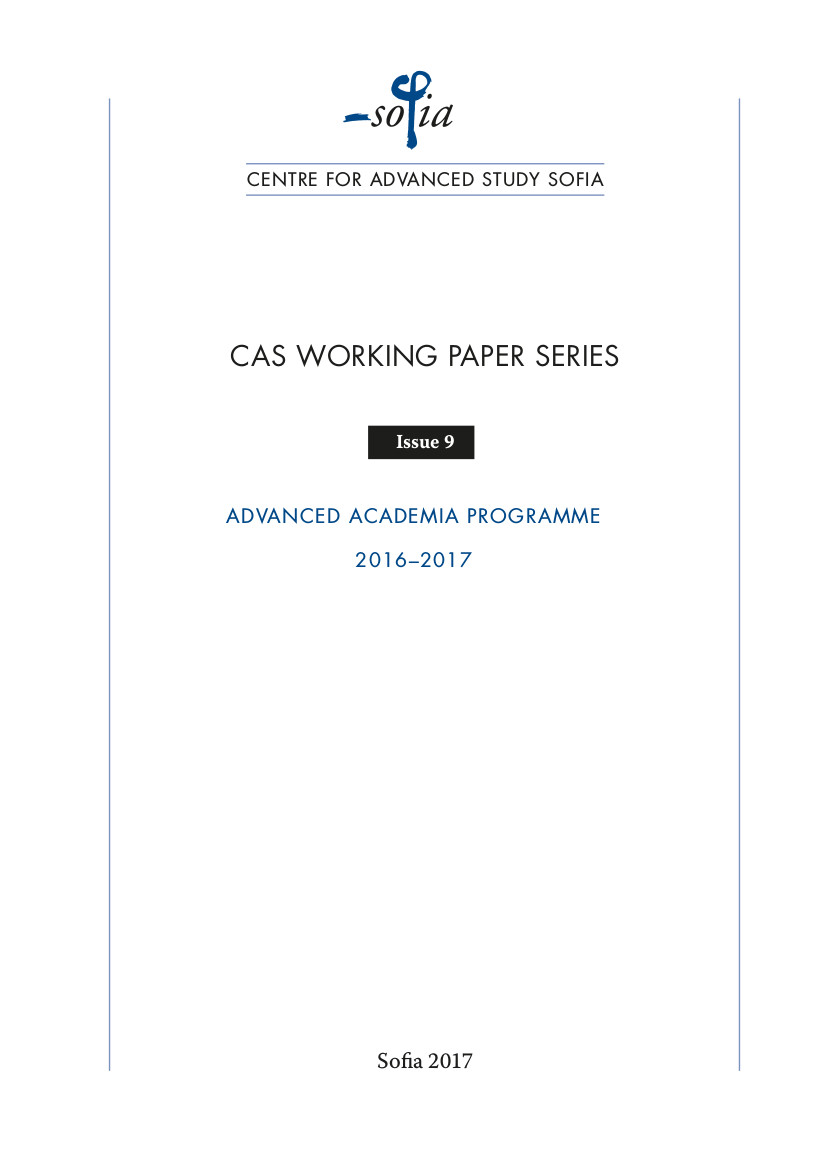The Bulgarian Perspective on Art from beyond the Iron Curtain during the 1960s. An After-History of Art.
The Bulgarian Perspective on Art from beyond the Iron Curtain during the 1960s. An After-History of Art.
Author(s): Irina GenovaSubject(s): Fine Arts / Performing Arts, Cultural history
Published by: Centre for Advanced Study Sofia (CAS)
Keywords: art of the 1960s; Iron Curtain; art and the Cold War; international art forums; Paris Biennale; Bulgarian artists
Summary/Abstract: Any historicising narrative presents as much the subject of the narrative as the present need for that narrative. In the present study of art during the communist period in Bulgaria, I am trying to state my present-day interest and view, perception and interpretation, formed in the conditions of the local, but also in the conditions of cultural globalisation. The formulation of questions related to previous artistic events and practices, and the search for answers pertinent to the present day have been provoked by my anxiety about the contemporary situation. Judging by the art practices and critical publications in our country in a liberal cultural situation after the fall of the Berlin Wall, and their relation with art practices elsewhere, one may ask the questions how and to what extent this situation reflects previous experiences.Since the fall of the Berlin Wall, in Bulgaria there has been no collective research aimed at historicising the art practices from the time of communist rule. Indeed, we should not disregard certain articles and parts of exhibitions. However, these critical attempts seem to have been insufficient for the formation of an understanding and interpreting different art manifestations. Research demonstrates that art contacts and the wider milieu of art practices in Southeastern Europe and in the so-called former ‘socialist bloc’ showed considerable differences as well as exhibited their own specifics. As for Bulgaria, the management of artistic life was centralised from the second half of the 1940s to the end of the 1980s. Today, the issues of mutual artistic influences and the places and means of their occurence are the focus of researchers from various fields. Hence, from today’s perspective, the (non-) happening of artistic contacts during the period of the ‘Cold War’ in Bulgaria and elsewhere seems crucial for the interpretation of artistic works and practices before 1989.The project falls in the broad field of visual studies and has an interdisciplinary profile. Arts defined as applied, as well as industrial design, deserve special attention. The fact that most visiting exhibitions from Europe to Bulgaria (from both sides of the ‘Iron Curtain’) came from this artistic field has been ignored until recently. The so-called ‘applied’ sphere was considered to be relatively marginal (compared to painting, sculpture, monumental arts) and ideologically safe. International exchange in the field of applied arts and industrial design is one of the main areas of the research.“The Bulgarian Perspective on French Art” is part of the extensive study. I have chosen to focus on France in particular, because the conditions for communication with France were especially favourable in the political context of the 1960s. The experience with French artistic culture of the older generation from before World War Two undoubtedly also matters.
Journal: CAS Sofia Working Paper Series
- Issue Year: 2017
- Issue No: 9
- Page Range: 1-31
- Page Count: 31
- Language: English

